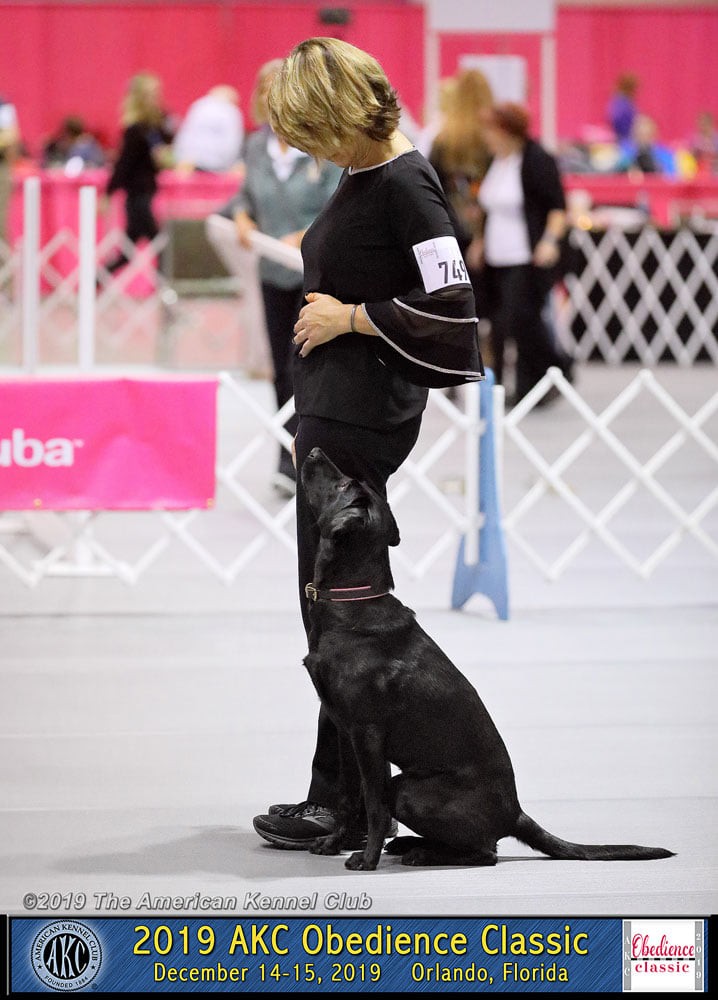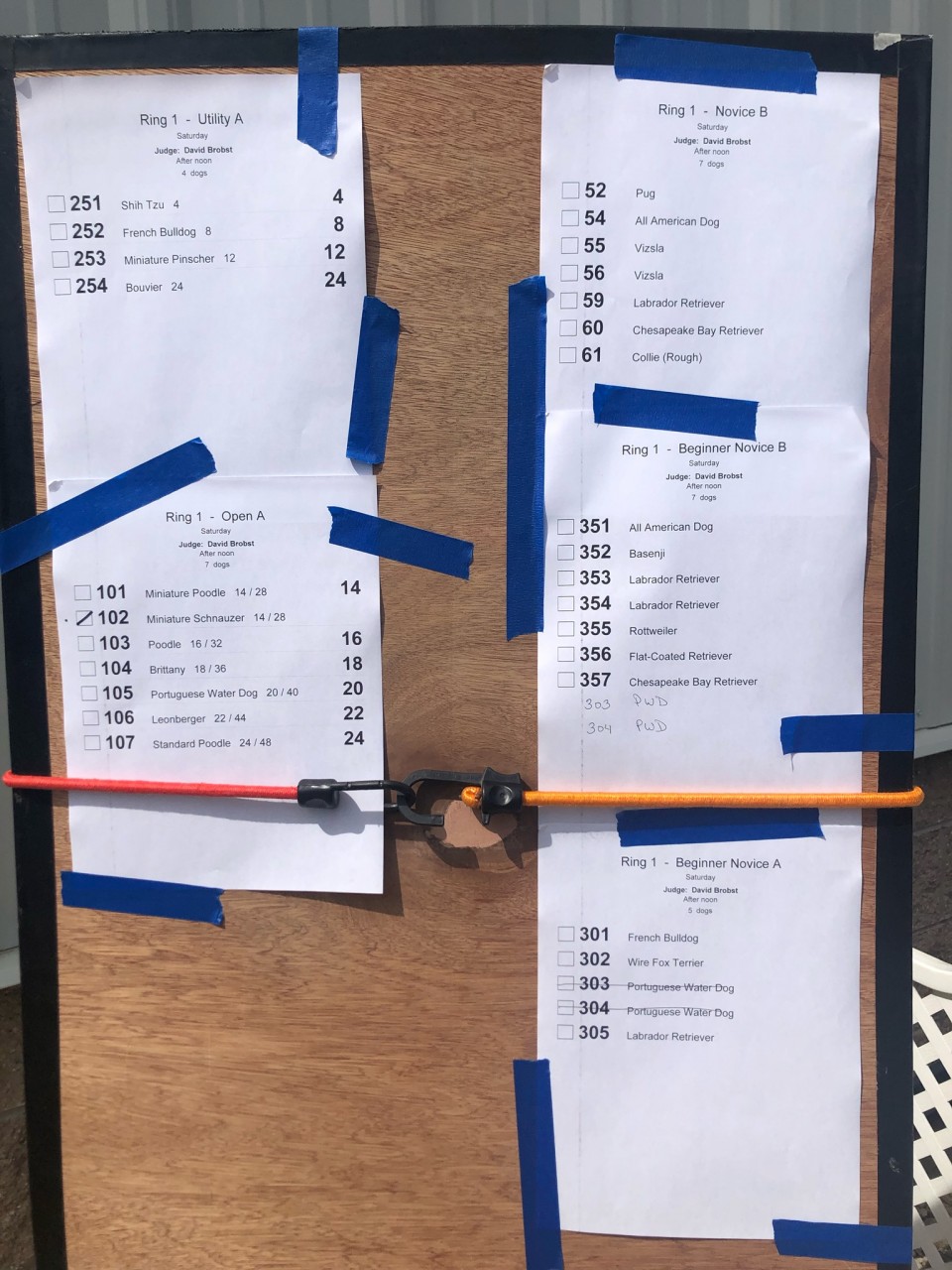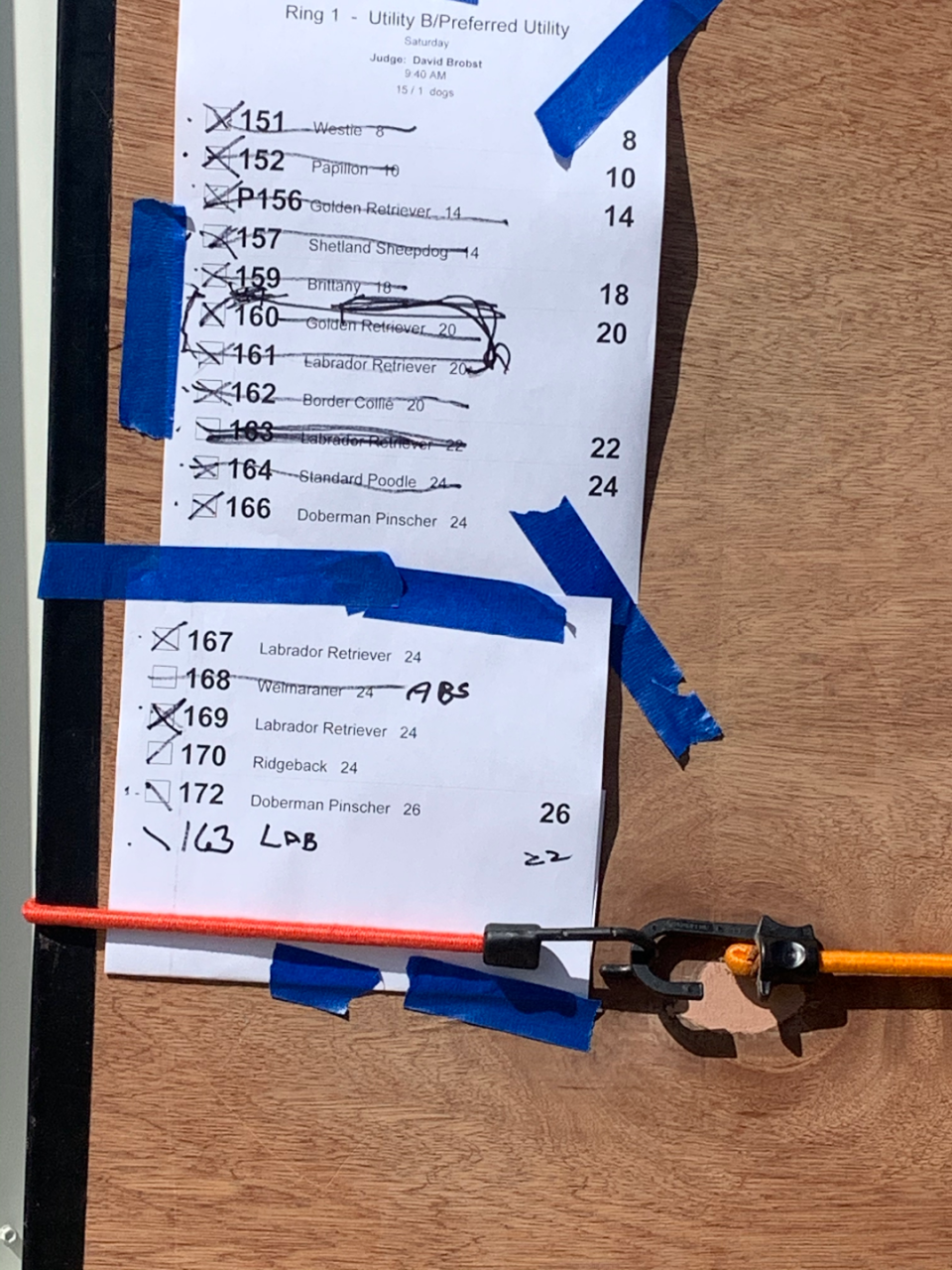Starting a new sport is exciting. Entering your first trial can be a little frightening. Everything is new and you don't know what to expect. The more information you have ahead of time the better you will feel. Here is a little guide on how to prepare for your first obedience trial and how things run once you get there.
Entering Your First Obedience Trial
Congratulations on entering your first trial! Remember that learning is part of the journey. The more you trial the easier it will get.
When you enter a trial, make sure you receive a confirmation from the trial secretary. You should hear back more or less ten days after you submit your entry. If you don't, send them a polite email checking on your entry. Sometimes entries get lost or you didn't fill everything out correctly. (Or, if you're me, you thought you sent it in but actually didn't!).
The trial secretary will send a "judging program" that you should receive about a week before the trial. (Click here for a sample copy of a Judging Program) The judging program will let you know the order the classes will run that day. It will also give you the ring number for your class.
There will be start times next to the classes. Your class cannot start before that time. Sometimes it will start later. If the class (or classes) before yours take longer than planned it will impact the start time of your class. If the start time for your class is "after noon", the earliest your class will start is 12.
Again, keep in mind that your class may start later. I know, it sounds confusing.
Here is the most important information. If your class is in the afternoon, you don't need to get there in the morning. You will be sitting around getting nervous. Your dog will get tired from all of the stimulation in the environment. If your class is first that day you will have a start time. The judging program will state what time the trial site is open.
If my class is first, I get there as soon as the trial site opens. Once you get your judging program, show it to someone experienced. They should be able to help you figure out roughly what time your class will start. (Don't have access to anyone? Send me an email. I'm happy to help!)
What to Bring to an Obedience Trial & What to Do When You Arrive
I prepare directions to the trial site and pack my gear the night before. This will diminish your anxiety the day of the trial. Make sure to bring a crate, chair, treats, water, trial leash, snacks for you and judging schedule.
When I arrive, I park my car and find the nearest restroom (coffee seems to have that effect on me lol). Then I walk around and orient myself. I make sure I know where the potty area is. I find my ring and the crating area, which should be marked. Then I bring my crate, chair and gear into the building and set everything up. Finally, I get my dog out of the car, potty him/her and bring them into the building. I settle my dog into the crate.
I STRONGLY recommend you bring a crate for your dog. It gives the dog a safe space from which they can absorb everything that's going on around them. It makes it clear to the dog when they are working and when they are not. If they are hanging out with you on a leash, they will expend lots of mental energy scanning the environment.
When you ask them to work, it's not clear to them that now they should ignore that same environment.
Finally, while I may trust my dog, I definitely don't trust anyone else's dog. Why? Well, simply because dogs are dogs. When in close quarters and on the end of the leash they can be unpredictable. It's my responsibility to keep my dog safe.
I keep my dog's leash very short and one eye on my dog, while keeping another eye on the environment at all times. I don't let my dog "visit" with other dogs. Altercations can happen very quickly and by the time we react it's often too late. An unfriendly encounter can ruin a dog for life.
Checking In And Reading the Board
Once your dog is settled, go to your ring. (Remember, your ring number will be in your judging schedule). They will have a large board that shows the classes and the armband numbers of the teams in each class.
Pictured above: Boards from a recent trial.
Teams that have checked in will have one line through the box next to their number. Teams that have been in the ring will have a second line in the box creating an "x". On the sample board they also put a line through the teams that have been in the ring. That was done because things are a bit more complicated with COVID rules (more on that later).
You will also see that one of the dogs was moved. Kind of messy, but you get the idea.
You can always ask the steward to help you make sense of the board. By looking at the board you can see which classes are finished, which class is currently being run and how many dogs into the class they are.
For Open and Utility, I would calculate approximately 9-10 minutes per dog. All other classes around 7 minutes per team. This will give you a rough idea of when your class will start.
You may need to factor in a judge's break. This is usually not predetermined or on the judging program. The club leaves it up to the judge to decide when they will break and for how long. When the judge does decide, the stewards will typically write it on the board. Most judges don't decide far in advance because they want to see how the classes are running. So just be aware and keep it in mind. You can always politely ask a steward and they will be happy to help.
This is also where you will check in and get your armband number. At some trials you will be able to check while the class immediately before yours is running. At other trials you can check in even earlier. If you are not sure, kindly ask the steward.
When Your Class is Called...
Before your class starts, your judge will call all the exhibitors to the ring (without their dogs). The judge will go over the heeling pattern, the location for the Figure 8, Stand for Exam and Recall. If you have any questions, take advantage! The judge is doing this to help new exhibitors.
Personally, I recommend visualizing your run a few times while waiting for your turn. This will help when you get in the ring. You will know where you are going, and you can focus on your dog.
If you have the opportunity to attend a trial, that's a perfect way to get acclimated to how everything is set up and runs. Of course, each venue will be slightly different. But overall, they are very similar. If someone you know is competing that day, that's a bonus. They can show you around and give you expert advice. If you have an opportunity to steward at a trial take it. It's an excellent way to learn how things are run.
COVID's Impact on Obedience Trials
COVID has had a significant impact on how trials are currently being run. The trial premium will provide important information.
Some trials do not have indoor crating. You will have to keep your dog in the car until closer to the time you will be in the ring. Some trials are being held outdoors. Obviously, in this case weather is a factor that must be considered. Some trials allow indoor crating. Most trials require a release form. Some require a temperature check before you enter the building. All are requiring that you wear a mask in and out of the ring, social distancing and hand sanitizing.
Make sure you prepare your dog by training with your mask on. The check-in procedure, getting your armband number, etc. varies from trial to trial. Much of the information will be in the premium. Final details will be outlined in the judge's schedule.
Make sure you read it very, very thoroughly. If you have any questions, you can ask a mentor or the trial secretary.
When you get there, go in without your dog first. Some trials have staging procedures that start outside. Others run everything indoors. It will vary from trial to trial. Don't worry. We are ALL in the same boat!! This is new to ALL competitors.
Don't be afraid to ask the volunteers questions. I certainly do. I want to be sure I am following the correct procedure to keep everyone safe. Remember, if you are able to attend a trial during this difficult time you are extremely lucky. Many parts of the country do not have that option. The clubs that ARE putting on trials have significantly more work to prepare and are under a lot of stress. We must be very appreciative and patient. Yes, things may be inconvenient for us. But it's important to keep things in perspective. Always be kind and grateful to all the volunteers that make the trial possible.
We Were All Beginners Once
Remember, we ALL started where you are. Every single one of us. Don't be intimidated. Don't be afraid to ask for help. It will make the process easier and more enjoyable for you and your dog. No matter what happens, you are taking the best dog home with you! Make sure you can list at least three things that went really well. Hug and kiss your dog. Most importantly, have fun!


